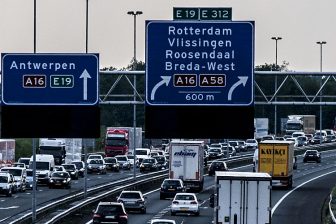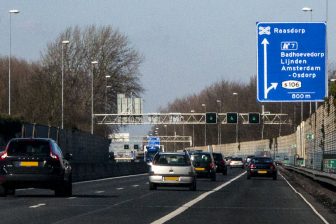Siemens integrates toll systems into single solution
Munich, Germany – Within the scope of a large-scale test, the Siemens Industrial Solutions and Services (I&S) Group in Australia has proven that the previously separate technologies for the collection of road toll fees can be integrated into one single solution in future with just a single hardware component. A hybrid OBU (on-board unit) in the vehicle manages both microwave and satellite-based toll systems. "The integration of microwave toll collection into satellite-based toll technologies presents new opportunities for operators of existing toll solutions", explains Stefan Höpfel, responsible for toll solutions in the Intelligent Traffic Systems (ITS) Division of Siemens I&S. "Operators can keep using the existing infrastructure and, at the same time, also the advantages of satellite-based toll collection. Contrary to microwave toll collection, the satellite-based system offers flexibility regarding any extension and in future will offer drivers more value-added services".
Today, both microwave-based DSRC (Dedicated Short Range Communication) and satellite-based GNSS (Global Navigation Satellite System) toll collection systems function smoothly and reliably. Nevertheless, both systems exist in parallel and up to now it has not been possible to operate them simultaneously. In a field test in Melbourne and the New South Wales region, Siemens ITS, Transurban, the toll solutions market leader in Australia, and the largest Australian mobile radio provider, Telstra, have successfully tested a hybrid OBU from Siemens VDO and a new software application with which both microwave-based and satellite-based toll solutions can be used by one single unit. The hybrid OBU, into which a DSRC microwave module is integrated, makes it possible to detect existing microwave signals from toll gantries in addition to normal satellite operation. "Therefore, Siemens is the first manufacturer of a hybrid OBU which detects microwave signals from gantries and processes GPS signals", says Höpfel. He emphasizes that this is above all important in view of possible migration from DSRC to GNSS solutions. With a detection rate of 99.74 percent, the usual 98-percent detection requirement for toll operators has been clearly surpassed. "We are surprised by and highly satisfied with the excellent results", explains Gino Dompietro, Transurban’s ITS project manager, "and we are planning more in-depth tests, which might finally lead to a real system implementation".
While the microwave system needs toll gantries spanning the road for vehicle localization and detection, the GNSS system uses the signals from the satellites belonging to the American GPS (Global Navigation Satellite System) or, as from 2008, those of the European Galileo satellite system. Also with regard to future expansion and development, the satellite-based toll collection system differs fundamentally from the microwave solution. "In the GNSS toll collection system we see a solution that is better enabled for the future", stresses Höpfel, "especially with regard to flexibility when it comes to extending toll collection to every road category, every category of vehicle and, what’s more, in terms of cost efficiency in implementation and operation. With regard to integration into European route networks, GNSS toll collection can also be expected to be the more advantageous alternative."
Further information under: www.siemens.com/traffic
U las zojuist één van de gratis premium artikelen
Onbeperkt lezen? Profiteer nu van de introductieaanbieding voor € 10,- per maand.
Bent u al abonnee?




